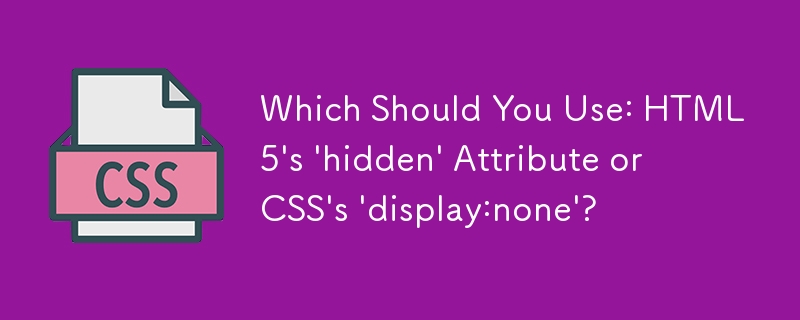

In the realm of web development, we often encounter situations where we need to hide content from the user's view. Both HTML5 and CSS offer mechanisms to achieve this, namely the 'hidden' attribute and the 'display:none' rule respectively.
Key Distinction: Semantics vs. Presentation
While both approaches produce the same visual effect, they differ semantically. The 'hidden' attribute explicitly marks an element as hidden, regardless of the presentation context. On the other hand, the 'display:none' rule merely removes the element from the visual flow, leaving it accessible to screen readers or other assistive technologies.
Accessibility Considerations
The use of the 'display:none' rule alone can lead to accessibility issues, as screen readers and other technologies may still attempt to interact with the hidden content. In contrast, the 'hidden' attribute provides a clear semantic indication that the element should be ignored in all presentation contexts, ensuring optimal accessibility.
Guidelines for Use
When choosing between the two options, consider the following guidelines:
By carefully evaluating the semantic implications and accessibility impact, you can effectively hide content using either the 'hidden' attribute or the 'display:none' rule, ensuring a user-friendly and accessible experience for all visitors.
The above is the detailed content of Which Should You Use: HTML5's 'hidden' Attribute or CSS's 'display:none'?. For more information, please follow other related articles on the PHP Chinese website!




